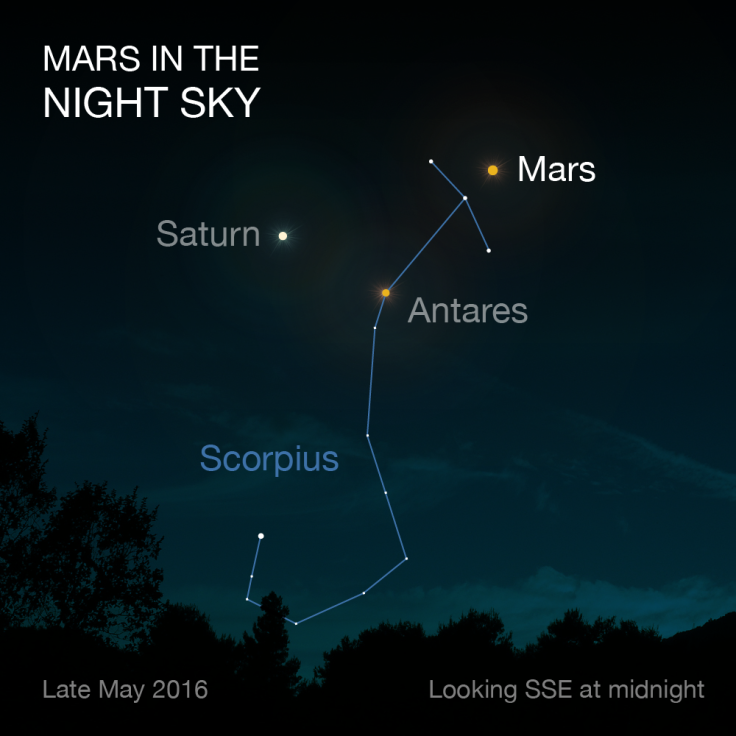Mars Close Approach To Earth, Closest In 11 Years

This Memorial Day will be memorable for another reason: a close encounter with Mars, the closest since 2005. Our neighboring red planet will be at a distance of only 46.8 million miles on May 30, when it will outshine Sirius — the brightest star in the sky — and even Jupiter, the brightest object in our sky after Venus.
Mars takes about twice as long as Earth to complete one revolution around the Sun, and therefore the two planets come close to each other in their orbits once every 26 months or so. The phenomenon, also affected by the elliptical orbits of both the planets, which are at an angle to each other, is called Mars close approach, and the theoretical closest distance between Earth and Mars is just short of 34 million miles.
The closest-recorded instance of Mars close approach in human history was on Aug. 27, 2003, when the red planet was about 34.6 million miles away, when measured between the centers of both the planets, the first time such proximity occurred in 60,000 years, according to NASA. The next time the two planets are expected to be that close will be in 2287. The last time it was closer than it will be Monday, Mars was 43 million miles away in October-November 2005.
On May 30, Mars will be visible for much of the night, reaching its highest point of about 35 degrees above the southern horizon around midnight. Despite the relative closeness, no details will be visible unless a good telescope is used. Unlike rumors that have been circulating since the 2003 Mars close approach, the red planet will not match the Moon in size.

Mars close approach has uses for astronomy other than a treat for amateur enthusiasts. Since it is when Mars is closest to Earth, it also makes for a good time to go to the red planet. With the exception of 2009, NASA has launched a mission to Mars every two years from 2001 to 2013.
To see Mars at its closest Monday night, hope for a cloudless sky and look southeast. And if you miss it, don’t fret. In the July 31, 2018, Mars close approach, the distance between the two planets will be only 35.8 million miles, making Mars appear about 25 percent bigger than on Monday.
© Copyright IBTimes 2025. All rights reserved.





















